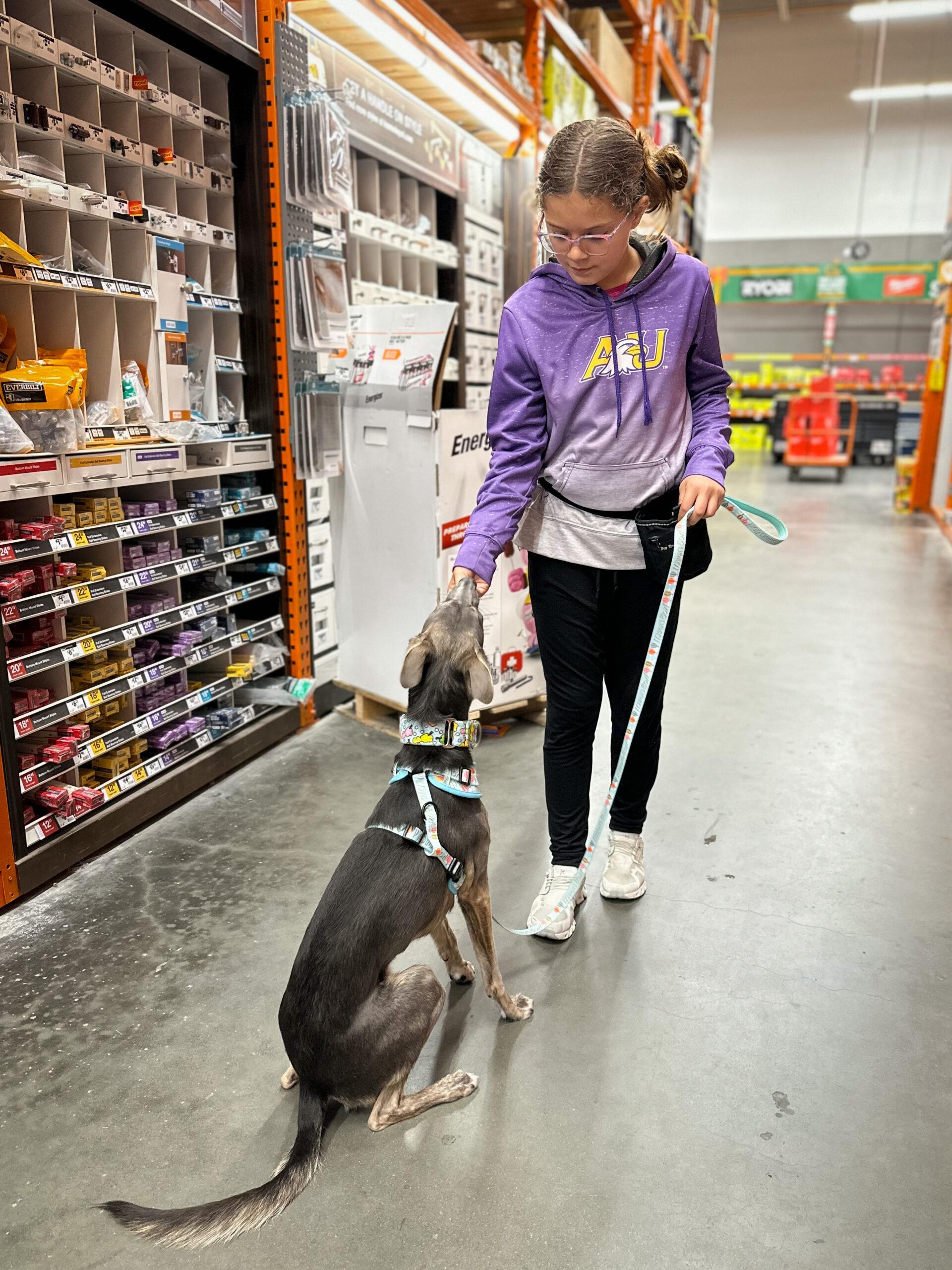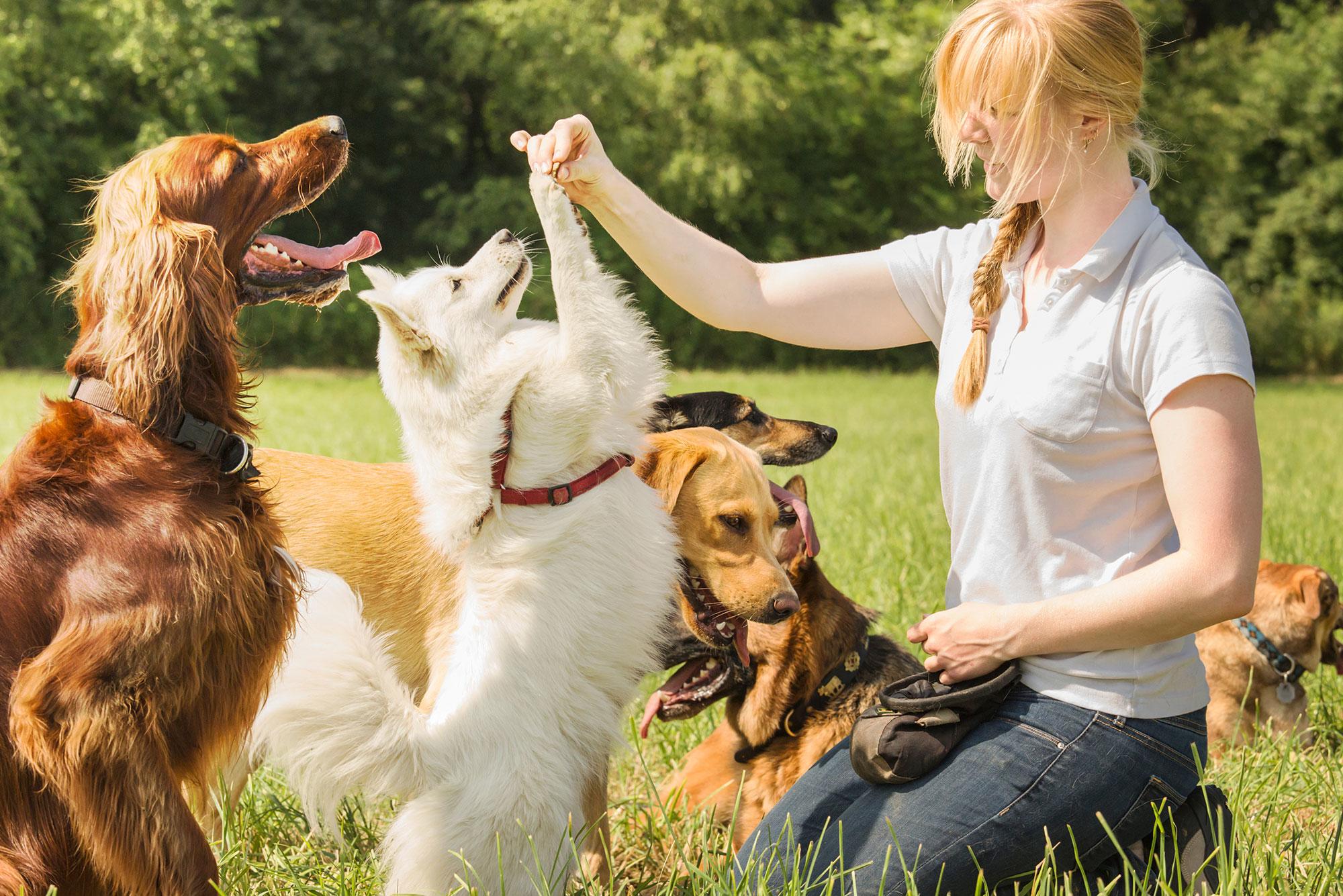How Dog Training Can Improve Your Pet's Quality of Life and Behavior
How Dog Training Can Improve Your Pet's Quality of Life and Behavior
Blog Article
Transform Your Canine's Habits With Proven Training Techniques
Changing your pet's actions calls for a nuanced understanding of their specific traits and demands, as well as the application of proven training methods. By employing positive reinforcement and recognizing important add their body movement, you can successfully resolve usual behavior problems such as extreme jumping or barking. Consistency in your training approach not just enhances obedience but also cultivates a much deeper bond of depend on and regard between you and your animal. The path to successful makeover might provide unexpected challenges that warrant more exploration.
Comprehending Dog Actions
Recognizing pet dog behavior is important for effective training and interaction between people and their canine companions. Pet dogs, as social animals, display a series of behaviors affected by genetics, setting, and experiences - Dog training. Recognizing these behaviors helps owners tailor their training approaches to fulfill the certain needs of their pet dogs
Trick aspects of canine habits consist of body language, vocalizations, and social interactions. Furthermore, socializing plays an essential function in forming actions; dogs that communicate positively with numerous individuals and various other animals are normally extra versatile and well-adjusted.
Moreover, acknowledging tension signals-- such as panting, pacing, or evasion habits-- can protect against rise into much more severe concerns. Owners that are in harmony with their canine's behavior can create a safe and nurturing atmosphere, cultivating trust fund and enhancing the training process. Ultimately, a deep understanding of canine behavior lays the foundation for an unified connection and efficient training end results, making certain both pets and their proprietors prosper together.
Favorable Support Techniques
Positive support methods are widely identified as one of one of the most effective approaches for training canines, cultivating a favorable knowing setting. This technique involves fulfilling preferred actions with deals with, praise, or play, consequently encouraging the pet to repeat those actions. Unlike punishing approaches, positive support builds trust fund and enhances the bond in between the pet dog and the trainer.
Benefits need to be given right away adhering to the wanted behavior to assist the pet make the link. Consistency is also necessary; making use of the very same commands and rewards helps the canine comprehend what is anticipated.
It is vital to note that positive reinforcement is not about bribery; rather, it is regarding reinforcing etiquette. Gradually, as the dog discovers to associate details actions with positive outcomes, the frequency of benefits can be progressively lowered, transitioning to verbal appreciation or recurring incentives. This method not just urges obedience yet additionally advertises a delighted and positive dog, making training an extra enjoyable experience for both events entailed.
Attending To Typical Issues
Addressing usual problems during dog training is vital for making sure a successful and harmonious relationship in between the canine and its owner. Several pet dog owners encounter behavior difficulties, such as excessive barking, leaping, and leash drawing. Comprehending the origin of these habits is essential for reliable training.
To mitigate this, offer enough physical exercise, psychological excitement, and chances for social interaction with both people and various other dogs. Educating the dog to sit upon welcoming can redirect this actions positively.
Chain pulling is one more widespread issue, regularly arising from a pet's enthusiasm to discover. Using correct chain dealing with methods, incorporated with training protocols that motivate loose-leash strolling, can significantly improve this habits.
Additionally, concerns like source guarding or splitting up stress and anxiety need customized approaches. Gradual desensitization and counter-conditioning can be effective in attending to these difficulties. By acknowledging and proactively handling these typical concerns, pet proprietors can cultivate a more pleasurable training experience and enhance the bond with their canine buddies.
Consistency in Training

To achieve uniformity, it is crucial that all members of the household comply with the same training approaches. For circumstances, using the very same verbal signs and hand signals makes sure that the canine obtains uniform messages. Additionally, the timing of incentives and adjustments need to be constant; prompt reinforcement raises the possibility that the pet will connect the behavior with the result.
In addition, establishing a regimen can additionally boost consistency. Normal session, combined with structured routines for feeding, strolling, and play, help pet dogs expect and comprehend their setting, making them much more responsive to training. Ultimately, consistency cultivates a complacency and count on, encouraging dogs to get more information properly. By committing to a structured strategy, trainers can promote favorable actions changes and cultivate a courteous friend.
Structure a Solid Bond
Just how can cultivating a solid bond in between a pet and its owner improve check my source the training experience? When a pet dog really feels safe and secure in its connection with its owner, it is more likely to exhibit positive actions and be responsive to discovering.
Additionally, a strong bond assists in much better communication. Canines are skilled at reviewing human signs, and a relying on partnership permits for more clear signals throughout training. Proprietors who invest time in building this bond through play, socializing, and positive reinforcement develop a setting where canines really feel motivated and excited to discover.
In addition, a well-established link can decrease anxiety and behavior issues, as pet dogs are less likely to act out when they really feel understood and looked after. Focusing on the development of a strong bond not just boosts the training experience but likewise adds to a happier and much more well-adjusted pet. Eventually, the trip of training changes into a collective collaboration, bring about lasting behavioral renovations.
Conclusion

Proprietors who are attuned to their dog's behavior can develop a secure and caring environment, cultivating depend on and improving the training process. Ultimately, a deep understanding of canine actions lays the foundation for a harmonious partnership and reliable training results, guaranteeing both dogs and their proprietors prosper together.
Addressing usual problems during pet training is necessary for making sure a successful and unified connection between the pet and its owner.Uniformity is a foundation of effective pet training, as it establishes a clear structure for the canine to understand actions and assumptions.In conclusion, changing a pet dog's behavior with shown training approaches needs an understanding of canine behavior, the application of favorable support techniques, and an emphasis on consistency.
Report this page